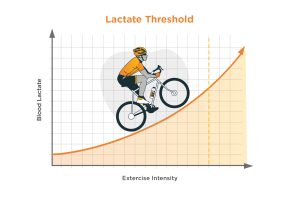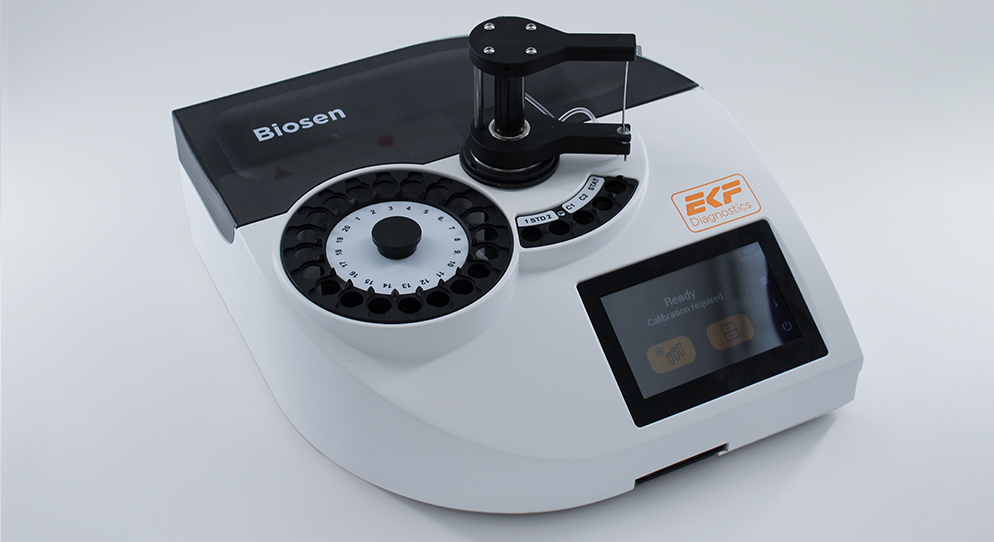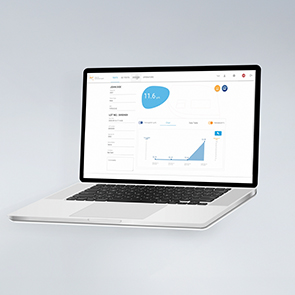Understanding Lactate
Its Role in Exercise, Performance, and Training
For many years, lactate was mistakenly viewed as a by-product of glycolysis and blamed for muscle fatigue during exercise. This misconception arose from early studies linking rising lactate levels with exercise intensity and fatigue.[1]
In reality, lactate plays a crucial role in energy metabolism. During normal activity, glucose is metabolized aerobically, producing pyruvate and hydrogen ions (H⁺), with oxygen enabling further energy production. However, as exercise intensity increases and oxygen becomes limited, the body shifts to anaerobic metabolism, with lactate as the primary end product.
Lactate is a valuable resource, not a waste product. It can be converted back to pyruvate to fuel the Krebs cycle (producing ATP) or transformed into glucose via gluconeogenesis in the liver. Blood lactate levels, typically 0.5 – 2.2 mmol/L at rest or below 4mmol/L at moderate exercise[2], support efficient energy use through multiple metabolic pathways.
Lactate Accumulation During Intense Exercise
During high-intensity exercise, oxygen becomes a limiting factor as glucose metabolism accelerates. This forces a switch to anaerobic metabolism, leading to increased lactate production.[3] While muscles can utilize and clear lactate to some extent, their capacity to do so is finite. As a result, lactate accumulates in muscle fibers and eventually in the bloodstream.
With consistent training, the body becomes more efficient at clearing lactate, delaying its accumulation in the muscles and blood. This adaptation enhances endurance by increasing the lactate threshold – the point at which blood lactate rises above resting levels.
How Athletes Improve their Lactate Threshold
Athletes can improve their lactate threshold through a combination of speed work and endurance training, which develops both aerobic and anaerobic metabolic pathways. This approach benefits athletes of all levels.
Lactate threshold tests help create personalized training plans that gradually increase distance and speed while avoiding overtraining. Endurance runs at a sustainable pace and builds the ability to maintain effort over time, while speed training, such as interval sessions, focuses on improving pace and reducing time over specific distances. As athletes adapt, they can increase these workouts’ intensity, distance, or volume.
Connecting Training to the Lactate Threshold
Long, sustainable-paced runs keep blood lactate levels normal, while speed training pushes the body beyond the lactate threshold, improving its ability to clear lactate. The most effective way to enhance the lactate threshold is through targeted threshold training, running at a pace near the lactate threshold, such as a 10K race pace or slightly slower.
However, consistently training at this intensity can lead to overtraining or injury. A balanced routine that combines endurance runs and varied speed work is the best approach to increase the lactate threshold while minimizing burnout.
Performing a Lactate Threshold Test
Lactate threshold tests, often called step tests, measure how blood lactate levels change with increasing exercise intensity. To conduct the test, you’ll need:
- A portable lactate meter and sensors
- Lancets for blood sampling
- A defined distance (e.g., 1200 meters)
- A pacing method (e.g., a GPS watch or treadmill)
- Ideally, a professional to collect blood samples and record results
Example Step Test Procedure
- Take a baseline blood lactate reading.
- Warm up with 1200 meters (distance may vary depending on run/cycle/row) at an easy pace.
- Take a second blood lactate reading.
- Run/Cycle/Row 1200 meters at a slightly elevated pace.
- Take a third blood lactate reading.
- Run/Cycle/Row another 1200 meters at a faster pace than the previous step.
- Take a fourth blood lactate reading.
- Run/Cycle/Row 1200 meters at a moderate to hard pace.
- Take a fifth blood lactate reading.
- Cool down with an easy jog for five minutes, taking blood lactate readings every 2–3 minutes until levels return to baseline.
The pacing in the test is critical. Each step should increase intensity but remain sustainable for the distance. A pacing watch or treadmill with speed control can help ensure accuracy.

Analyzing Results
After completing the test, use software provided with your lactate meter to analyze the data. The results will show the pace at which your lactate threshold occurs—typically at the second or third increase in pace. This threshold becomes a target for speed training sessions.[4]
Repeat the test every 6–8 weeks to track progress. Improved results will show the lactate threshold shifting to the right, meaning you can sustain higher paces without accumulating lactate.
Summary
Understanding lactate and its role in energy metabolism is key to optimizing performance and delaying fatigue. By incorporating a balanced mix of endurance runs, speed work, and lactate threshold training into your regimen, you can increase efficiency, improve lactate clearance, and push your limits without overtraining. Regular testing and progressive training adjustments will help track improvements and fine-tune your approach.
One of the most effective ways to monitor your progress is through lactate threshold testing using a lactate analyzer. These portable devices provide real-time blood lactate readings, allowing you to pinpoint your threshold, measure training adaptations, and ensure you’re training at the right intensity. By periodically testing your lactate levels, you can make data-driven decisions to optimize workouts and enhance overall endurance.
Sources:
[1] Gladden, L. B. (2004). Lactate metabolism: a new paradigm for the third millennium. The Journal of Physiology, 558(1), 5–30. https://doi.org
[2] UCSF Health. (n.d.). Lactic acid test. University of California, San Francisco. Retrieved from https://www.ucsfhealth.org
[3] Beneke, R., & von Duvillard, S. P. (1996). Determination of maximal lactate steady state response in selected sports events. Medicine and Science in Sports and Exercise, 28(2), 241–246. https://doi.org
[4] Bentley, D. J., Newell, J., & Bishop, D. (2007). Incremental exercise test design and analysis: implications for performance diagnostics in endurance athletes. Sports Medicine, 37(7), 575–586. https://doi.org
NOTE: this guide is for information purposes only, and is not intended for use in patient diagnostics, screening, monitoring, or for making treatment decisions.






